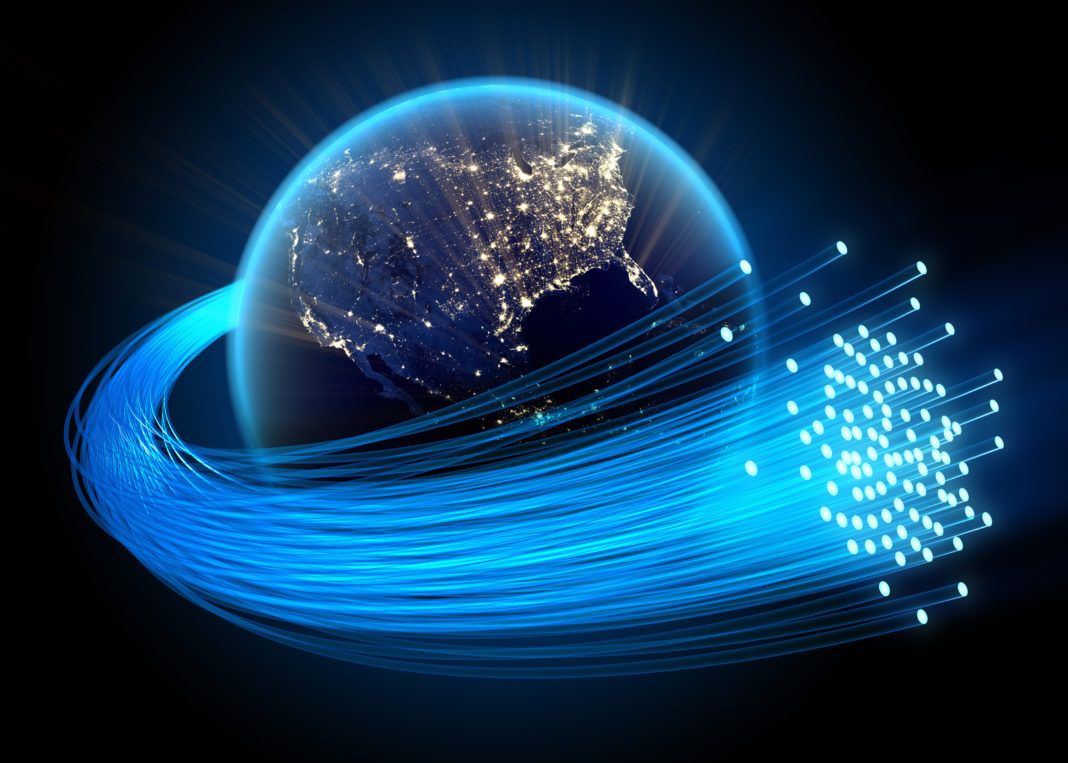Sponsored by EATEL Business
Beneath any good wireless network is an underlying infrastructure. The business conducted online is bolstered by the material used in the hardware that actually conducts it. The two most prevalent options are fiber-optic and cable-internet. To know which broadband connection is right for your business, consider these advantages.
When comparing fiber verses cable, fiber-optic cable is considered more advanced. It uses small, flexible strands of glass to transmit information as light. Cable internet utilizes copper cable (coax) and data is sent via electricity. This is how we’ve watched cable television for decades. In areas where fiber optic cable has been run already, such as urban and larger suburban areas, fiber seems like the choice for building for the future. Fiber offers speed and reliability, and is more cost effective. Only you know what is truly best for your business, but there are some compelling reasons to seriously consider switching to fiber. Whether your business needs basic internet connectivity or a more robust solution, EATEL Business has high-speed data and Metro Ethernet services to serve. Click here for more information and to customize your business options.

LIFE IN THE FAST LANE
Lower load time
Latency is the time it takes for a request to travel from the sender to the receiver and for the receiver to process that request. In other words, the round-trip time from the browser to the server. Fiber optic cable is just flat out faster. Fiber offers speeds up to 10 Gbps, symmetrical upload and download bandwidth. While cable internet is slower, it offers broadband speeds that meet the needs of most small and medium-sized businesses. Cable-internet, for example, represents a significant upgrade in speed compared to a DSL connection.
Performance reliability
With fiber, you run on a dedicated line. With cable, you share a connection with other businesses. The fiber cable is more reliable as a data conduit than copper in the coax cable. Because the core is made of glass, which is an insulator, no electric current can flow through. This means it’s immune to electromagnetic interference and radio-frequency interference (EMI/RFI), crosstalk, impedance problems, and more. You can run fiber cable next to industrial equipment without worry. Fiber is also less susceptible to temperature fluctuations than copper and can be submerged in water.
Cost of connection
Though fiber cable is a bit more expensive than copper in the short run, it may be less expensive in long-term. Fiber typically costs less to maintain, has less downtime, and requires less networking hardware. In addition, advances in field termination technology has reduced the cost of fiber installation as well. Visit eatelbusiness.com for more information and to customize your options.
Secure lines
Your data is safe with fiber cable—unlike wireless connections or copper lines which can be tapped. Fiber doesn’t radiate signals and if an attempt is made to break the physical security of your fiber system, it will be readily apparent. Fiber networks also enable you to put all your electronics and hardware in one central location, instead of having wiring closets with equipment throughout the building.
Click here for more information about how EATEL can customize your business solutions.
 GET DAILY REPORT FREE
GET DAILY REPORT FREE



